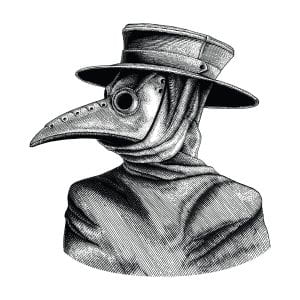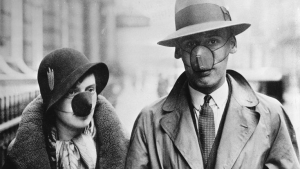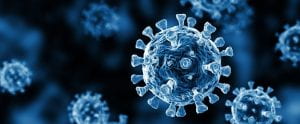Welcome to my blog,
In health, we have been studying about Death, Dying, and the Afterlife. We watched Coco and learned about the Day of the Dead. We have looked at different traditions around death and learned about the ways to cope when a person dies/ways to cope with different sorts of loss like change. There are many different religious beliefs around death, and how people have dealt with death over time.
For my assessment, I decided to investigate killer diseases.
Bubonic Plague
The world has experienced many killer diseases such as plagues, smallpox, and the flu. Somehow with all these deadly diseases humans still managed to survive it all. It started in Europe from around 1347 to 1351. The pandemic killed a 1/3 of Europe somehow slowing down at around 1350’s. It finally ended in 1351 in Europe but it was still rampaging throughout Africa ending in 1353.
People who caught the plague develop fever, headache, chills, weakness, and one or more swollen, painful lymph nodes (called buboes). They usually slowly turn black as the skin tissues start dying. Since they didn’t have modern medicine back in the day the fatality rate was 75%. A person usually becomes ill with bubonic plague 2 to 8 days after being infected. Now with modern medicine, the plague can easily be cured. Only if you get it treated in its early stages. If you get it treated in its later stages it’ll be too late.
The plague spread through fleas and infected rodents. The doctors at the time thought that the plague was spread by the bad air. So they wore thick leather clothing coated in wax, a hood with crystal eyepieces, and a beak filled with herbs and spices. The plague doctor also wore a beak filled with spices like cinnamon, pepper, turpentine, roast copper, and powdered viper flesh to get rid of the bad air.
About 1/3 of Europe died from this deadly plague. The plague was spread around by rats and fleas. Everyone was wrong about the bad air spreading the plague, but unintentionally the plague doctor’s thick black leather clothing coated in wax protected them from flea bites. Which was the true culprit of The Black Death.
Many other countries like the UK got the plague through ship rats, dead bodies, and infected people. The plague didn’t last too long in the UK because the cold weather slowly killed off all the fleas. It couldn’t reach America because the trip was long enough that all the rats died off before even coming near America.
If people knew what spread the plague it wouldn’t have been a big deal. People were panicking and spreading the plague to other places in Europe. Many towns shut down access to their city which lowered the chance of the plague entering.

Spanish Flu
The Spanish flu was a devastating global influenza pandemic that occurred in 1918-1919. It is said to be one of the deadliest pandemics in human history. The Spanish flu had a high mortality rate, especially among young healthy adults. Spanish flu was particularly deadly to children under age 5 and people over the age of 65.
The symptoms of the Spanish flu were similar to the flu. They would develop a fever, cough, and body aches. However, the Spanish flu is a bit different. These symptoms can also lead to severe pneumonia and respiratory failure. This contributes to its high mortality rate.
The pandemic had a huge impact on societies, economies, and healthcare systems. It quickly overwhelmed hospitals and medical resources. With many people dying, they eventually ran out of coffins to bury the dead.
The Spanish flu pandemic eventually ended somehow. But it emerged with the second wave being the deadliest. As the flu mutated people developed some level of immunity, slowing down its progress. By 1919, the pandemic had largely died out.

Corona Virus
A more recent pandemic that we all experienced was the COVID-19 pandemic. COVID-19 (Coronavirus Disease 2019) is an infectious respiratory illness caused by the novel coronavirus SARS-CoV-2. It first emerged in Wuhan, China, in late 2019.
COVID-19 is believed to have originated in a seafood market in Wuhan China where live animals were also sold. The exact origin, but it is thought to have originated in bats and passed on to humans after eating them.
COVID-19 spreads when an infected person coughs, sneezes, talks, or breathes. It can also spread by touching surfaces contaminated with the virus and then touching the face.
COVID-19 has a wide range of symptoms which can vary in severity. Common symptoms include fever, cough, shortness of breath, fatigue, and loss of taste or smell kind of like a cold. Some people may have the virus but do not show symptoms. This is important because you can accidentally infect someone without even knowing. This is dangerous, especially for older people.
People who caught COVID-19 experience mild to moderate symptoms and recover without hospitalization. The virus can cause severe respiratory illness, particularly in older adults and individuals with underlying health conditions. Any young and healthy people have a very high chance of surviving the virus. But 60+ may experience the worst symptoms and may even die of the virus.
Unlike in the Middle Ages, public health organizations had a plan to control the spread of the virus. They took measures such as wearing a mask, social distancing, hygiene, lockdowns, and restrictions on public gatherings. Some countries like the United States struggled with this. Many people thought COVID-19 was a hoax until they were proven wrong by catching it. There was also huge shortages of toilet paper, sanitizer, and mask.
At around February the COVID-19 vaccine was developed and authorized for emergency use in various countries around the world. These vaccines have proven highly effective at preventing COVID-19 and reducing the severity of the disease.
With humans developing immunity to COVID-19 the virus mutated into different variants. Some of these variants have raised concerns due to their potential to spread more easily or evade immunity from previous infections and vaccinations.

References
Plague Symptoms
Deadliest Diseases
Spanish Flu
Covid
Thank you for reading my blog.

















